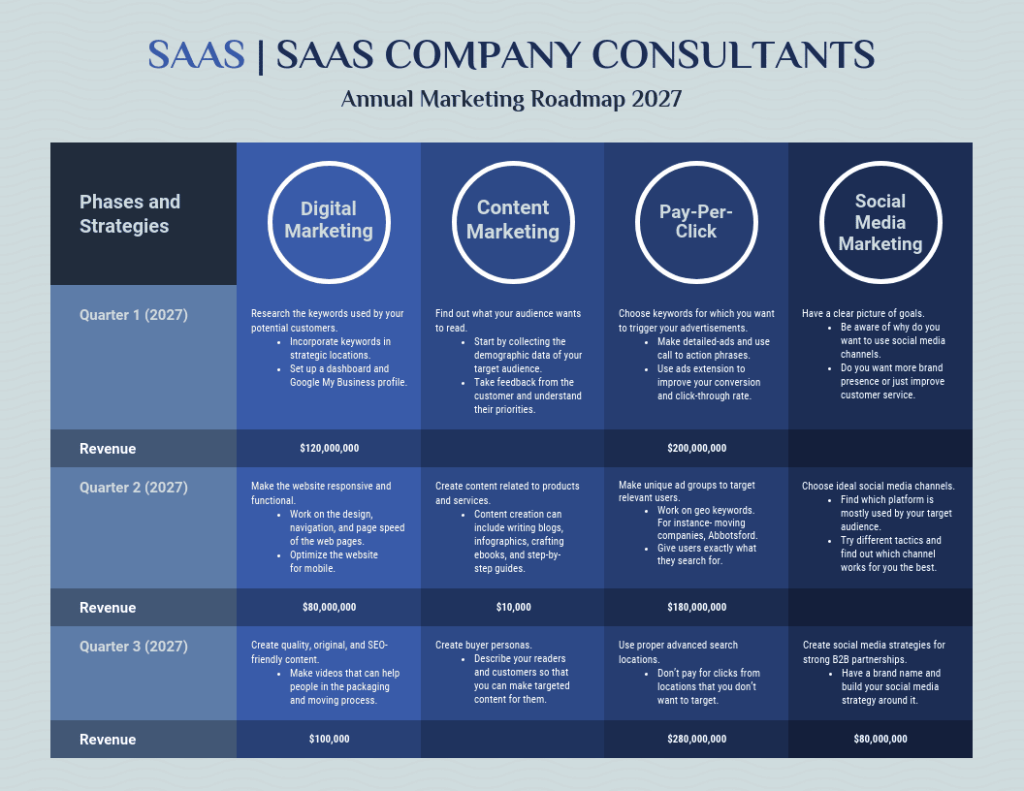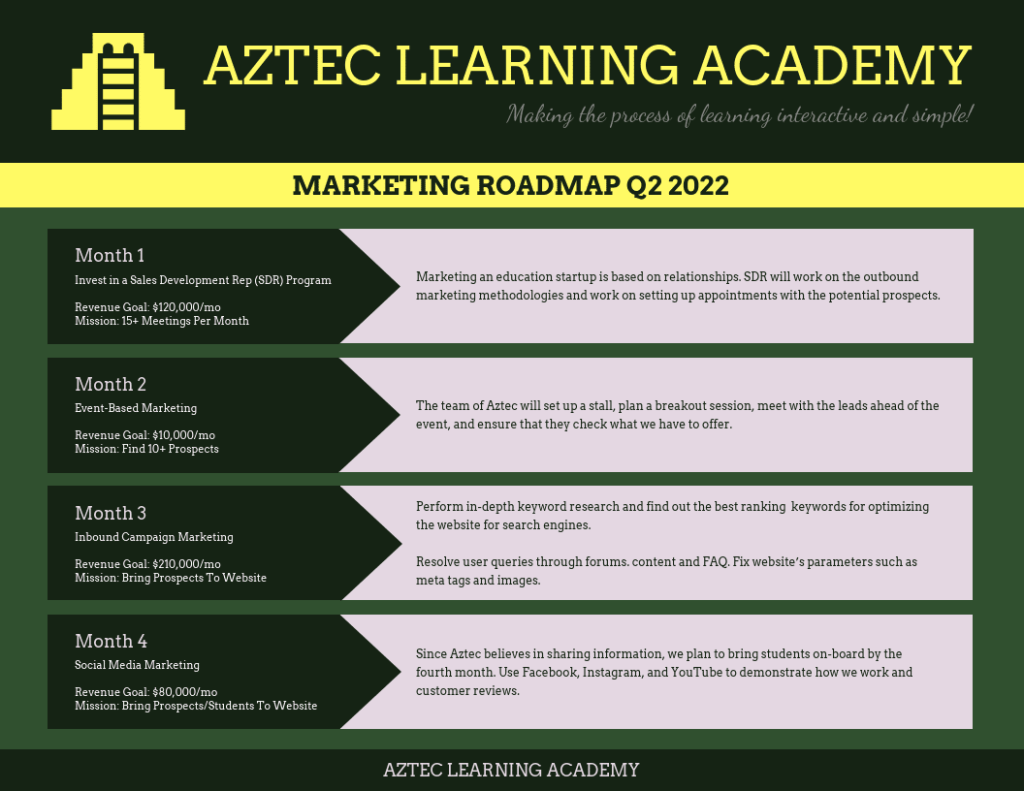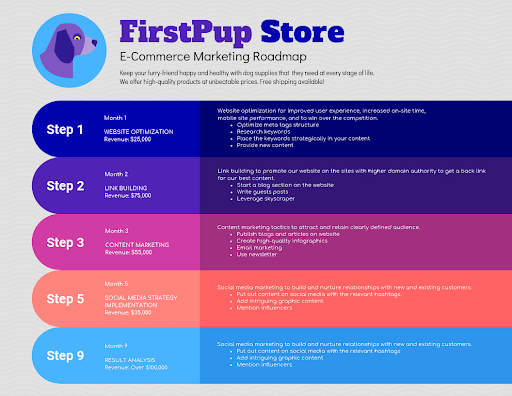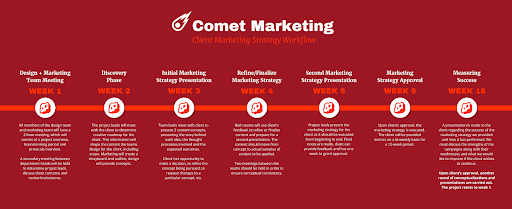
How to Create a Marketing Roadmap to Align Your Team
Everyone knows that in order for you content marketing efforts to be as effective as possible, you need to have a plan. But coming up with a plan is only part of the solution.
Aligning your team so that everyone is executing on the plan effectively is another part.
Planning and executing on your marketing strategy is one thing when you’re operating solo. It’s another thing when you’re operating as a team.
If you’re in a project management position then you know that aligning your team comes with its own set of challenges. If you want your team to be – essential, in fact – that everyone on your team are working towards clearly defined goals.
Just like you would create a product roadmap, so you should also create a marketing roadmap. A roadmap is a document that plots out your goals and the steps you will take to achieve them within a certain time-frame.
Quick Takeaways:
- Create a marketing roadmap to align branding and advertising campaigns to your quarterly and yearly business goals.
- Know the important metrics and KPIs for your business so that you can get the details of your roadmap right.
- Visualizing your roadmap makes it easy to understand and focus on priorities.
Here’s how you can create your own marketing roadmap that breaks down your goals into concrete, tangible milestones that your team will understand.
Start With Your High-Level Goals
Everyone is busy with lots of work to do. But does your team really understand how their work impacts your high-level company goals?
One of the main goals of your marketing roadmap is to communicate how marketing impacts your high-level goals. When everyone in your company is working towards a unified goal, there is a greater sense of purpose – and better, more efficient work gets done.
As with any project you plan, your marketing strategy should directly align with your high-level company goals. When roadmapping your content strategy, every step on that roadmap should directly tie back to your high-level company goals as well.
Break Down your Marketing Goals Into Inputs and Milestones
How do you align your marketing roadmap with your high-level goals effectively? You break them down.
For example, say your top company-wide goal for the year is to achieve $8M revenue. As a content marketer, your job is to plan how you can acquire enough customers to hit that goal.
This is where you need to evaluate where you will focus your budget, time and energy. Currently, which channels are driving the most traffic to your site?
Let’s say your biggest acquisition channel is organic traffic. Your marketing goal for the year could then be to scale organic traffic to 350,000 monthly visitors by scaling content production and promotion.
Now that you have a goal specific to organic traffic, you can break it down even further and set specific goals for your various types of pages like your product pages, blog, and homepage.
This is where you will get into the main content of your roadmap. You can now identify the inputs of success for each type of page, and set specific milestones that will impact your content goals.
For example, let’s say that one of your content goals is to increase your organic blog traffic by 20%. Some inputs for increasing organic blog traffic could be the number of new blog posts published, number of outreach campaigns launched, or number of co-marketing campaigns launched.
You can then set specific milestones on a weekly, monthly and quarterly basis. For example, you could set a goal to increase the number of outreach campaigns launched per month from 4 to 8. That milestone will be something you want to highlight on your marketing roadmap.
Let’s say another one of your content goals is to grow your brand YouTube channel Watch Time by 30%. Some inputs could be number of new videos published, number comments, and average view duration. Now you can set some specific milestones like publish 1 new video every week, or increase average view duration from 2:30 minutes to 5 minutes.
Now that you have your goals, inputs and milestones, you can visualize them using a marketing roadmap.
(This is only a very brief explanation of how to break down your goals into inputs. Brian Balfour has a good article on setting growth goals that I recommend.)
Visualize Your Roadmap for Easy Reference
Many people understand concepts better when they’re presented in a visual format. A roadmap gives you actionable steps that culminate in a goal – a handy tool when you’re asking a team to execute on a strategy.
In my opinion, marketing roadmaps should look like product roadmaps. The approach is virtually the same – you’re working towards a result (usually a high-level metric) by breaking down a larger project (your content marketing strategy) into smaller deliverables (blog post ideas brainstorming sessions, outreach campaigns, social media marketing, content creation, etc.).
Here’s an example of what a marketing roadmap could look like:

Of course, how you choose to break down and lay out your inputs and milestones will depend on the particulars of your marketing strategy.
But some general rules to follow when laying out your roadmap are:
- Add a bar for each task or activity
- Group bars by team or initiative
- Stack bars by channel or type of content
- Sort bars by start date or priority
The most straightforward way to sort your bars is by month. This will allow you to highlight monthly milestones you intend to hit:

But you could also organize your roadmap into phases. This would lend to a more high-level roadmap, like one you would include in a presentation:
I would also recommend using color to categorize tasks by status or priority.
Generally, roadmaps are living documents. Most likely, things won’t go entirely to plan. Color-coding your roadmap will help communicate how your marketing strategy is progressing.

Another option is to visualize your roadmap as a timeline. This approach can be effective if you want to highlight different phases of a strategy, or to outline major events in chronological order:

But a timeline won’t be as effective for breaking down a roadmap into smaller inputs and task.
At a high level, a roadmap can communicate an overview of the general timeline your marketing strategy will take to execute. On a more granular level, a roadmap can communicate deliverables within specific timeframes. How you design your marketing roadmap should depend on what you are trying to communicate to your team.
Repetition, Repetition, Repetition
If you’re leading a team, then you will know how difficult it can be for people to remember things you tell them. It’s understandable – everyone is very busy. But goal alignment is crucial to an effective, productive and high-performing team. This is something you can’t afford to have your team forget.
Make sure your roadmap is easily accessible for your team to refer to. You could even print out your roadmap and pin it up in a meeting room (keeping in mind that you may need to update the roadmap periodically).
Regularly checking on the progress of your marketing roadmap with your team can boost communication, encourage alignment, and foster accountability.
—–
This is a guest post from Sara McGuire, Content Marketing Lead at Venngage






